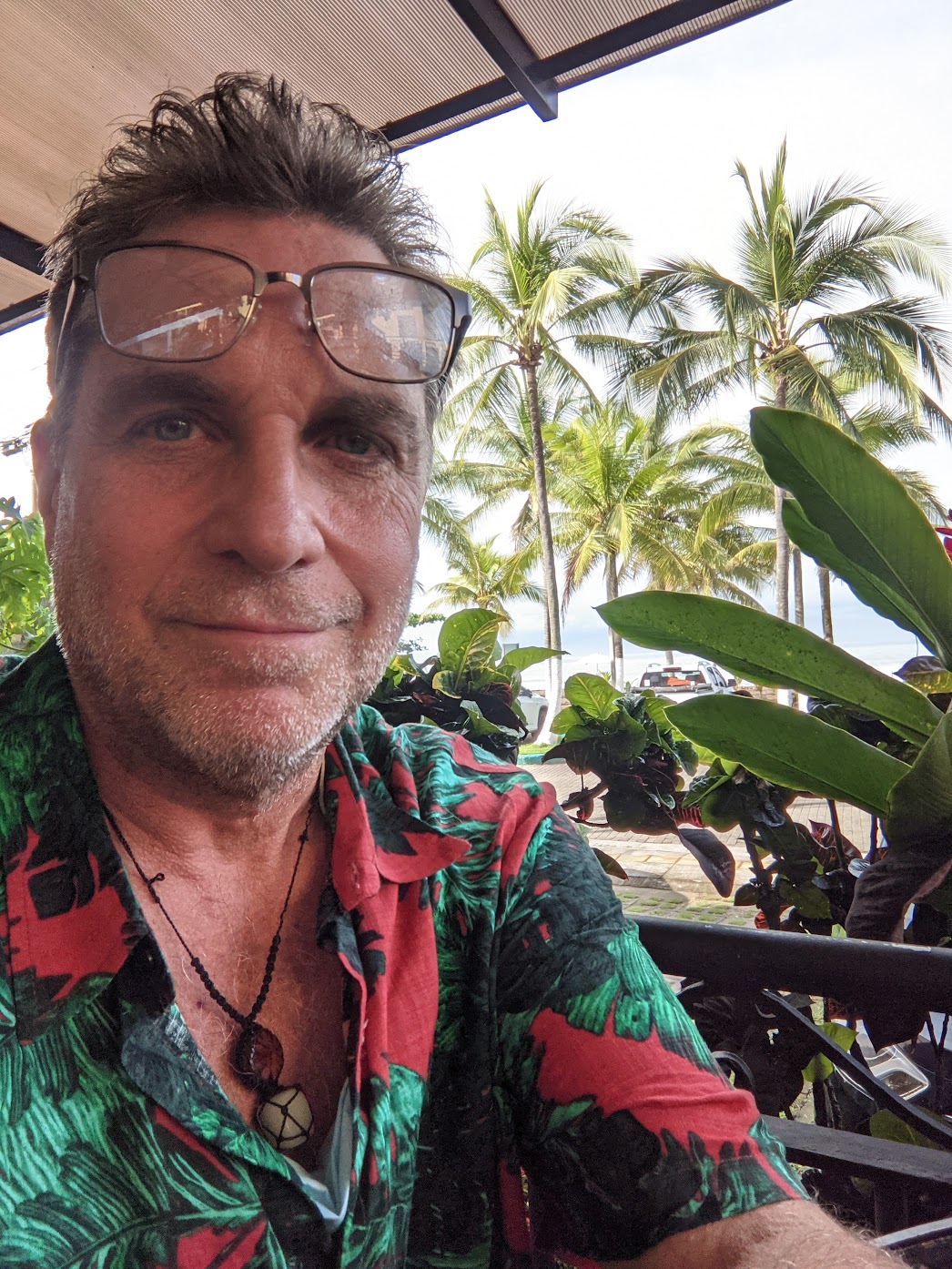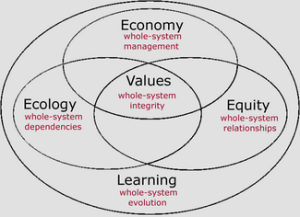Considering A Six-Point Architecture For Mapping Next-Generation Innovation
A deeper Learning conversation has emerged that we believe will help designers of companies, technologies, and communities, to develop new forms of offerings that are more appropriate for a conscious global culture. These conversations are the result of a new framework for organizing ourselves, where our activities now relate to what we call a Regenerative Commerce system. One that provides a balance of Equitable, Ecological, and Economical products and services to our global communities – otherwise known as the triple bottom line. Just as sustainability is defined in many different ways, these so-called 3E’s are also described and used in many different ways:
Ecology for example, is often used as another word for ‘environment’ when actually the word means interdependency of systems. It’s really an activity; a verb or adjective and not a noun. Even the related word “environment” is seen as a thing separate from the human condition rather than intimately apart of who we are. Its definition actually means: The complex of social and cultural conditions affecting the “nature” of individuals and their communities, both human and non-human.
Similarly, Equity is often categorized with the idea of justice and human rights. This may be true, but when the word is studied a bit further, it actually relates to our notion of ‘choices’. The word equity means the ability for a community to offer diverse choices to its stakeholders and community members. It depends on those members having the know-how and ability to accept the responsibility of making healthier choices from a broader framework of understanding and questioning. Choices that can sustain, not only the individuals doing the choosing, but also enhance the well-being of the greater community.
The fourth ‘E’ is Economy, which is also often used as a same-as replacement for the word money. However, it actually has nothing to do with money directly. The dictionary’s definition says it means ‘management of home or place’, where that place can be a colony, a forest, a company, a city, a nation, a planet, etc. Most important: It is NOT another word for finance or money!
![]() Next is Values, which is the inter-relationship between these 3E’s. This is what makes up a measurable system for exchanging money. Money is merely the symbol for the actions of exchange that occur between people as a result of seeing the whole system’s inter-dependencies (ecology), system relationships (equity), and system management (economy). I like to use a dollar sign with three lines to help identify the difference between our unsustainable existing system and a sustainable triple bottom line system, representing a regenerative commerce system that can sustain the evolution of an emerging global society.
Next is Values, which is the inter-relationship between these 3E’s. This is what makes up a measurable system for exchanging money. Money is merely the symbol for the actions of exchange that occur between people as a result of seeing the whole system’s inter-dependencies (ecology), system relationships (equity), and system management (economy). I like to use a dollar sign with three lines to help identify the difference between our unsustainable existing system and a sustainable triple bottom line system, representing a regenerative commerce system that can sustain the evolution of an emerging global society.
Finally comes Decision-Making, which is really an outcome that occurs when the above five points are considered interdependently. Decisions are the choices that we make, and they occur every moment of our day. In organizations, I propose that there is a problem with the decision-making process because of an overly hierarchical structure (See concentrix management for a better system to make decisions.) Way too often, decisions end up getting made at the top of this management pyramid without folks really having a full encompassing perspective (i.e. multiple view points). Not only is there not enough requests for stakeholder insights, but the decision-making model that is used is too limiting to be able to take in an extended set of data. This data is what eventually ends up becoming a product or service that moves into the global social-environmental-economic system. For example, if we were using something like a six-point decision-making process as described here, do you think the tail pipe on an automobile would have gotten past the drawing board?
More on ‘decision-making’ later. Keep watch at my sustainable innovation blog.
.
————
Extended Definitions
* Learning: A way of practice that “pre-forms” required changes in performance, resonant feedback loops from one to the other
* Values: Expression of the essence of an organization; the DNA core underlying all activities and behavior, transparently effects all resulting missions, goals, strategies, and provisions, links from ‘mythology’ (inner) to “value proposition”(outer)
* Economy: Management of place (not management of ‘money’)
* Ecology: Inter-relationships of place (does not mean ‘environment’)
* Equity: Choices made available within a place (does not mean ‘equality’) Place’: is relative to your conversation and focus. It can be an organization, a home, a city, a region, a nation, a planet
* Economic Vitality-System Management: Defining and managing our regional economic structure so that balanced, healthier, wealthier communities can be realized within an emerging global market and society.
* Ecological Stewardship-System Dependencies: Recognizing our interdependence on all life systems. Generating greater respect and care for our environments, their use, and our relationship with Earth’Âs life systems.
* Social Equity-System Relationships: Realizing the benefit of different status and capabilities. Understanding how individual diversity and collective community coexists. Empowering people to responsibility through leadership that creates choices for individuals that allow for healthy, more whole communities to emerge.
* Equitability: The development of a learning community of professionals committed to global transmutation – where development of a diverse set of choices (which inherently generate interest-based responsibilities) is seen as an essential ingredient for the larger system’s survival and vitality (i.e., chaordic innovation).
* Economical: Development of a micro-system of participants choosing to manage themselves and their organization with a broader comprehension of its participation within a larger organism – planetary, cosmic.
* Ecological: Design processes that flow with Nature’s (universal) emergent tendencies; where cyclic feed-forward and feed-back looping occurs in ways that create integration and inter-reliance on every other sub-system within a greater whole.

